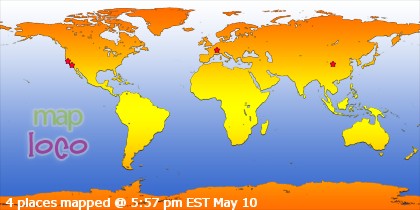By SHAILA DEWAN
CHAMBERS COUNTY, Tex. — The rescue trucks and ambulances, neatly arranged in a double column, sat waiting at the point where State Highway 124, the road to the Bolivar Peninsula, disappeared underneath a storm-bloated ocean. Early Sunday afternoon, that was the closest the rescue workers could get to the string of little towns they had fled two days before as Hurricane Ike approached, leaving behind what they estimated were a few hundred holdouts.
As they waited, stymied, for the waters to recede, their minds were occupied with visions of the worst. “There’s going to be substantial deaths,” said the emergency medical services coordinator for High Island, Robert Isaacks. “It looks pretty grim, to tell you the truth.”
He added, “The water’s slowly but surely going down now, but it’s not going down fast enough for us.”
The Bolivar Peninsula is a barrier island-like finger of land east of Galveston Island; between the two is the entrance to Galveston Bay. It is normally reached by ferry from Galveston or via the rice-farming country east of Galveston Bay, where on Sunday drowned cattle were half-buried in piles of debris along the gravel roads.
About 3,800 people live on the peninsula. Many residents who refused to evacuate were “hard headed,” Mr. Isaacks said, believing they could ride out this storm much as they had previous ones, and refusing last-ditch pleas to leave. He said that an estimated 500 residents had stayed behind, but that the Coast Guard had flown some of those people to land.
A Coast Guard spokesman, Senior Chief Petty Officer Steve Carleton, said that 93 people in the Houston area had been rescued by helicopter before the storm hit, and that many of those were from the peninsula.
But others were trapped by a storm surge that hit in the wee hours Friday morning — well in advance of the hurricane — swamping evacuating cars and flipping a dump truck that constables were trying to use as a rescue vehicle. “They were saying there was going to be a surge when the storm hits, not 24 hours before the storm hit,” Mr. Isaacks said.
Petty Officer Carleton confirmed that some of those rescued Friday had been in their cars.
Some of the rescue workers said they had been asleep when they got a call on Friday warning them that the storm surge was upon them. They immediately began a fraught rescue operation. Stranded people were loaded into the pickup truck of an emergency worker from Crystal Beach, on the peninsula, but just as they were about to reach safety, the truck rolled over, the workers said. The evacuees, floundering through chest-deep, snake-infested water, were herded to a guard rail for safety. Four were rescued by helicopter.
Some of those left behind on Friday were perched on rooftops and water tanks, and many are low on drinking water and food, said the workers, who had not had radio or cell phone contact with those left behind but had reached one resident in High Island, the most elevated point on the peninsula, by a land line.
One middle-aged man was washed from his home on Crystal Beach all the way to the mainland, where he was spotted by National Guard troops in a helicopter and picked up.
“That’s the only miracle we’ve had so far,” said the Chambers County sheriff, Joe LaRive. “When the water picked up his house, he floated out a window and hung onto a piece of wood all night long, and he saw fish and alligators and fire ants.” The man was treated and released from a nearby hospital, Sheriff LaRive said.
Randy Faulkner, a volunteer firefighter on Crystal Beach and a member of the Gulf Coast Search and Recovery team, said Bolivar had been all but forgotten even though it had received the brunt of the storm surge. “There’s a lot of devastation in Galveston, don’t get me wrong,” Mr. Faulkner said. “But the peninsula, it’s gone.”
On Sunday afternoon, a team from the Texas Parks and Wildlife Department pulled up with five boats in tow, offering to take some of the rescue workers out to the flooded section of the peninsula, along with a postal inspector they had brought along. They did not have ice, water or other supplies; their sole aim was to survey the area.
Mr. Faulkner, eager to assess the situation for himself, got aboard one of the boats. About an hour later, he called a volunteer member of the Crystal Beach emergency service, Rey Leija, to give a report.
Mr. Leija walked over to a small knot of workers, cellphone in hand. “They’re coming up with bodies already,” he said. Officials declined to say more.
As the sun set over the waterlogged farmland, the boats began to return. Cathy Rush, who said she was the peninsula’s only paramedic, climbed off to report what she had seen: No bodies, but slabs where houses had been, and houses parked on the highway.
“We’re all volunteer firefighters and E.M.T.’s who went out on the boat,” Ms. Rush said. “We all lost our houses. I don’t know anybody that didn’t.”
Sunday, September 14, 2008
Rescuers Fear for Those Stuck on Texas Peninsula
Labels: .circus.
Subscribe to:
Post Comments (Atom)















0 comments:
Post a Comment